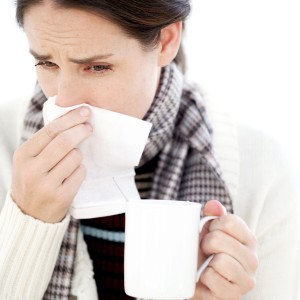Sleep deprivation. Most of us can attest having a night of tossing and turning, hoping for some rest to get through the next day. So how do we manage it and what are the long-term effects of not being able to sleep through the night?
TCM Perspective:In Traditional Chinese Medicine (TCM), night is the most yin part of our 24 hours. It’s time for deep sleep and rejuvenation. There is an organ clock system that corresponds to the function of each organ (see below). During our most restful moments some of our most vital organs such as our Gallbladder, Liver and Lungs are busy. Reference to each organ is energetic and not literal in function description. To keep within the realm of mind, body, and spirit. I’ve included some of the Taoist beliefs regarding the soul aspects associated with the organs, as well as clinical manifestations and importance of each organ.
The Gallbladder is paired with the Liver organ. In TCM, its associated with decision-making. For effective function in this area we need to rest at that time, which is 11pm-1am.
The Liver which stores the blood, houses the Hun or Ethereal soul, manifests in the eyes and nails and is in charge of the smooth flow of qi throughout the body. The Ethereal soul, in Taoist belief, leaves after the body passes. The Hun focuses on long-range goals and evolution. In a clinical setting, disruption in this flow can lead to a “qi stagnation” or a counterflow, which may impede digestion, lead to irritability and can cause menstrual problems (PMS symptoms and blood clots). The time of the Liver is from 1-3am.
The Lungs house the Po which is part of our conscious life and dies with us. It’s focused on shorter term desires of the lifetime. It’s said that as the Po deepens in consciousness and supports the long-range goals of the Hun. The Lungs help descend qi through the body, take in clean air, it’s also associated with taking in new thoughts, supports our protective qi (immune system) and shows it’s luster (or lack of) in our skin and hair.
When we wake at these times in the evening, your licensed acupuncturist will look at the organ imbalance and address that in their treatments, restoring homeostasis. The treatment can be very relaxing; many people fall asleep during their treatments.
Some Tips for R&R
In the TCM classics, it’s recommended that we rise and rest with the sun. Now, that’s not completely realistic especially in the winter months when the days are shorter. But studies have shown that having less than six hours of sleep, or lack of restful sleep can open up a can of worms in terms of your health.
1. Weight gain – NewYorkTimes just post an article that illustrated the improvement of BMI for teens that had one more hour of sleep. reference below
2. Brain fog and impaired memorization
3. Irritability and moodiness
4. Poor cardiovascular health, high blood pressure and increased stress hormones
5. Poor immune healthHow to Manage Your Sleep?
1. Any lights in your room? Cover them or turn them off. Cell phones, computers, and alarm clocks. It can disturb your circadian rhythm, which is influenced by environmental factors like like. When there’s lack of light, there’s an increase in melatonin production.
2. Acupuncture and herbs are a great way to get your body in balance by reducing stress hormones, relaxing the body, and increasing blood flow.
3. Foods and drinks that benefit a health nights rest: Incorporate mushrooms, like reishi have calming and nourishing effects on the body. Chamomile tea is very calming. Oats and brown rice, oyster shell, lemons, dill and basil also have a therapeutic effect.
4. Foods and drinks that may hinder rest: alcohol, spicy foods, rich and greasy foods, caffeine, sugar and heavy meals – these things can lead to an imbalance that we call Stomach fire – which can be linked to teeth grinding at night or TMJ.
5. Exercise for rest: In TCM, the Yin Qiao and Yang Qiao channels are the medial and lateral channels that control the opening and closing of the eyes; they start at the feet and go up to the eyes. Insomnia can be caused by an excess yang. By rubbing the crown of your head, known as DU20 100 times, UB2 (medial end of your eyebrow) and then the ball of your foot, until warm, will help balance your channels and help with sleep. The book excerpt from Blue Poppy has a deeper description and great illustrations.
6. Too much on your mind? Write it down. Put a pen and paper by your bed to jot down thoughts. There’s a wonderful Chinese proverb that my mentor taught me, “A dull pencil is better than the sharpest mind.” You can’t store everything in your brain; write it down.
7. Don’t eat 3 hours before bed. Going back the organ clock. Your stomach is at its lowest energetic point from 7-9 pm. It’s time to give it and you a rest. See tip #4.
8. Warm baths (not hot baths that make you sweat) can increase blood flow, bring down the heart rate and make you nice and calm for a night’s rest.
The list could go on and on, but we have to stop somewhere.
Do you have any nightly rituals? What are your recommendations for a good nights rest? Please share in the comments below.
References:










